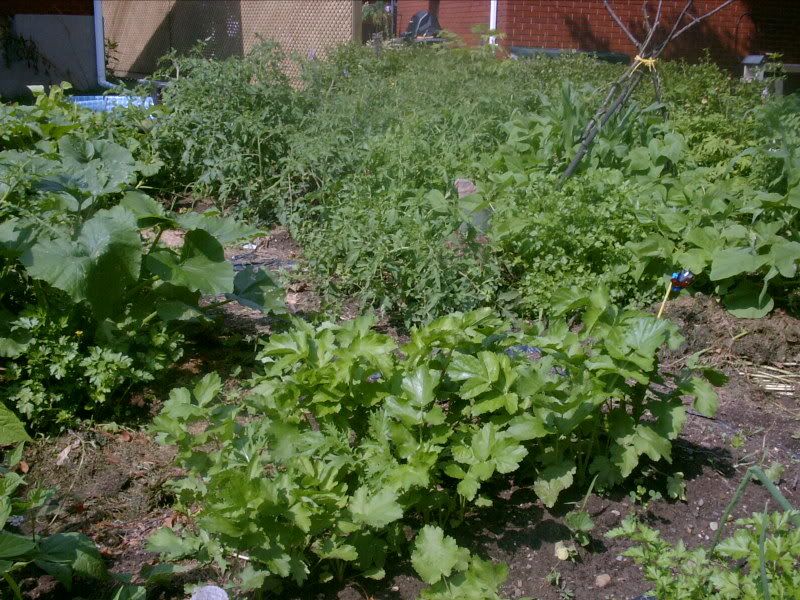Back on topic - Overwintering parsnips.
Hortiphilia Fact:
You can overwinter parsnips!
Cold turns starch to sugar so spring dug parsnips are sweeter.
At least, it seems that most people can overwinter them even in zone 2/3. I read in the gardenweb forum of some really far north gardners who have self seeding beds of this divine root crop and I thought, is this possible for me? When would they flower. Would the seed grow fast enough to produce decent sized parsnips for harvest in the fall, or only in the spring. Would I be selecting for smaller parsnips? How many parsnips would I need to keep up sufficient variability in the genetic line? Will the garden plot get riddled with disease because it wasn't rotated? Questions, questions.
I think I stumbled across the answer of 6 parsnips as adequate genetic stock. I believe the source was Breed Your Own Vegetable Varities by Carol Deppe. However, I have to verify that.
Could I keep 6 parnsips aside for seeding reasons. Of course! Perhaps, an experiment is warranted... I feel an optimistic gardener warning coming on...
Parsnips in the foreground, mid-summer

Extra, extra, read all about it (or general info):
- Plant parsnips as soon as the ground can be worked
- Soil must be loose and without stones. A cheat way to plant is to take a crowbar and make a conical hole, fill with a mixture of peat moss and sand, or some other sifted light material.
- Parsnip seeds germinate poorly so always use fresh seed. It also germinates slowly so many people suggest marking the row or block with radish seeds.
- They taste better after a couple of heavy frosts as the starches are converted to sugars.
- You can store them in the ground over winter. I've never heard of someone mulching them first but I don't think it would hurt. Harvest as long as the ground is diggable and then first thing in the spring.
- You can store them in a root cellar as well.
- They are really tasty roasted, or in stews. We make root veggie pie out of them!

3 comments:
It sounds like you have really thought this through. Since you mentioned being worried about selecting for smaller roots, maybe it's a good idea to save seeds in a controlled way first so you can select for the best roots, before just letting them just go wild in your garden. After saving seeds for 2 or 3 years, you will have the best possible plants for your particular garden.
Also since parsnips are biennials, you might have to sow seeds two years in a row before they established themselves, otherwise you might end up with parsnips every other year. Parsnips go to seed in the summer of their second growing season. The seeds probably wouldn't germinate until the following spring.
Also, like I mentioned in a reply to your comment on my blog, consider that parsnips are more like weeds than anything else and the chance is high they will escape from your garden.
Good luck with your new blog!
Thanks. I did think of that two year problem. Hmmm weeds. Will my neighbous like them? Or Ottawa in general. I wonder how many fallow fields have parsnip populations. I think there is a wild form of parsnip around here... what was that. More questions. Happily I like questions.
"Parsnips go to seed in the summer of their second growing season. The seeds probably wouldn't germinate until the following spring."
I didn't know that, but it makes sense. I let a plant go to seed, not sure what it was, and it was parsnip. Now my entire one side of my plot is covered in parsnips, a nice problem to have.
Post a Comment